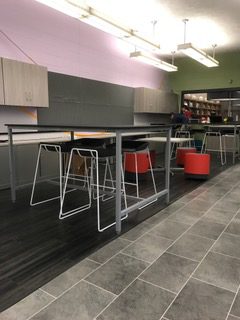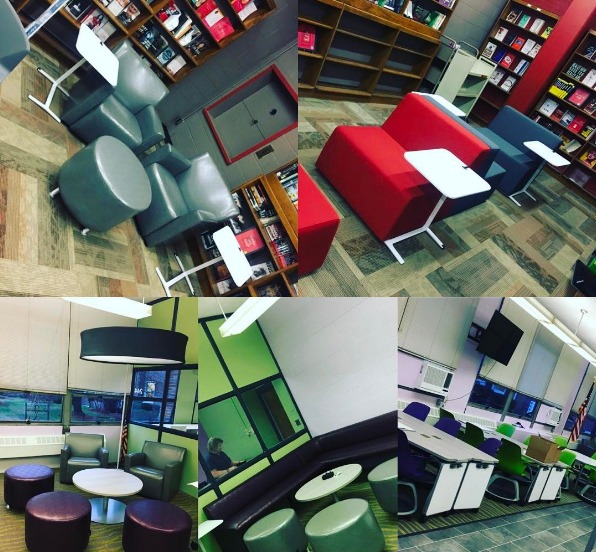Think your library needs a renovation? You might be right, but before spending unnecessary money on a major overhaul, you might want to think again. I receive inquiries all of the time from schools whose libraries are not used, and thought that renovating their space was going to do the trick. Oftentimes, even with a big referendum that allows for a state-of-the-art renovation, those spaces continue to be unused.
The solution to turning a library around is NOT a renovation, it is the culture.
Upon my arrival at New Milford High School, I walked into a library that was unused and that was referred to by my principal at the time, Eric Sheninger, as a barren wasteland. We didn’t have the luxury of a big sum of money to renovate our space, so we were forced to think of other ways to make changes in our space. Those changes focused not on how the space looked, but on transforming the culture of the space.
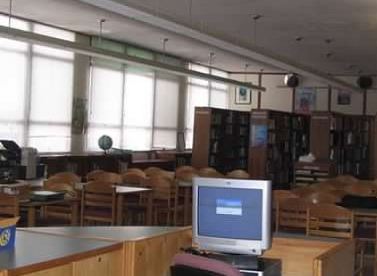 Thanks to a few core changes, our space went from being completely irrelevant to our school community, to a thriving learning metropolis.
Thanks to a few core changes, our space went from being completely irrelevant to our school community, to a thriving learning metropolis.
Culture is not as easy to change as the physical space and it certainly isn’t something that money can buy for you, but when changed, it makes all of the difference in the world, and any renovation you may eventually do, is a bonus. Transforming the culture of a library is no easy feat, however, there are simple steps you can take to start today, and some don’t have to cost any money at all.
1. Reconsider Food and Drink – Due to the schedule constraints the students of my school have had, I felt it was critical to leverage the lunchtime periods and do what I had to do in order to make it possible for them to visit the library during that time. Prior to my coming to New Milford High School, their policy, like so many other libraries, was not to allow food and/or drink in the library. For me, this was always the norm, but this changed for me when my son and I visited the public library in Suffern, NY. One of the things that made our visit to this library so memorable, was its library cafe.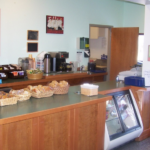
I remember how nice it was for my son to be able to have a snack and for me to get a cup of coffee during our visit there, and not having to leave the library to get those things. It made our experience feel more like visiting a bookstore, rather than an antiquated library. I carried that experience with me and decided that allowing food and drink in my library was something I wanted to be able to do for my students. Thanks to that change, our once unused library became vibrant, particularly during the lunchtime periods. It became a safe place for those who might not otherwise want to eat in the school cafeteria, to be able to come and eat, and it gave them opportunities to do things and make things while or after eating their lunch.
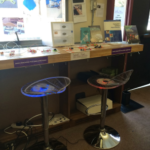 2. Make the Most of What You Have – Although we could not spend a large sum of money transforming our space, we were able to make changes that helped to transform our culture. For example, after massively weeding our collection, we were left with bookshelves that were being unused and that could not be moved, because they were built into our heating system and walls. So we decided to use that space to our advantage and convert one of the shelves into a littleBits bar, which cost us no money to create. The bar became the cornerstone of our makerspace that we ended up putting into our library. It allowed a once unused space in our library to be used by our students as a place to make, create and innovate.
2. Make the Most of What You Have – Although we could not spend a large sum of money transforming our space, we were able to make changes that helped to transform our culture. For example, after massively weeding our collection, we were left with bookshelves that were being unused and that could not be moved, because they were built into our heating system and walls. So we decided to use that space to our advantage and convert one of the shelves into a littleBits bar, which cost us no money to create. The bar became the cornerstone of our makerspace that we ended up putting into our library. It allowed a once unused space in our library to be used by our students as a place to make, create and innovate.
We also did this with a larger section of shelves, as well, transforming that area of our library into a digital creativity bar.

Making the most of what we have, also came into play when transforming our library shelving. The shelves which we took down from our main space, were repurposed and rearranged to create a beautiful reading room that houses our new bookstore model collection.

3. Nurture a Participatory Culture – The common thread that has run through all of the libraries that I have worked in, in grades K-12, has been the idea of harnessing and nurturing a participatory culture. I have tried to build into my libraries as many opportunities for students to do things and create things as possible. Libraries are places where information and resources are consumed, but they are also places where students can be creators, if given access to not only information, but the materials, resources and supplies to be able to do so. Our makerspace is one element of our participatory culture.
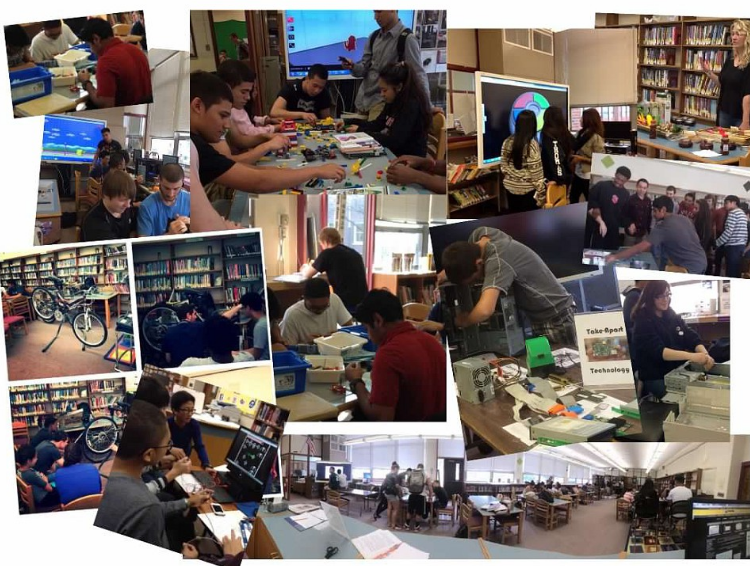
In addition to that, we also have various board games, chess and checkers tables, coloring books and supplies, and even a stage that allows for a plethora of activities.
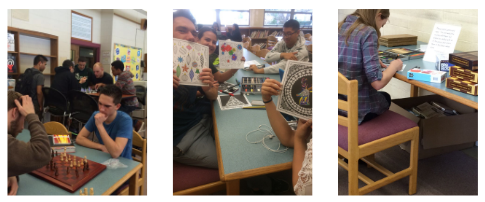
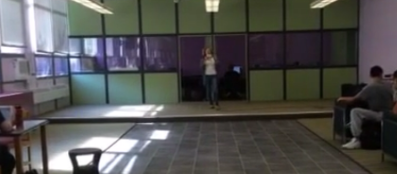
This idea of a participatory culture in libraries is not a new thing. In fact, check out this picture of my library taken back in 1954! The library gods of New Milford High School would be proud that we once again have a participatory culture running through our space.
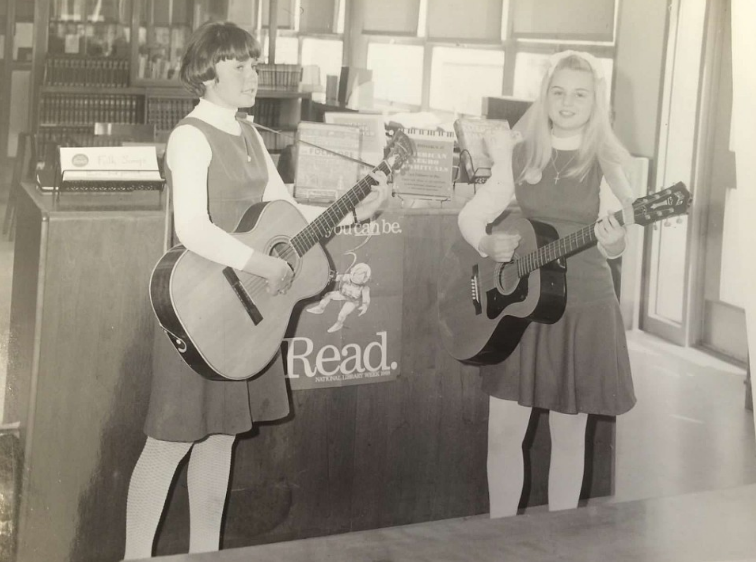
4. Give Students a Voice – I often get asked by schools about what they can do in their library that will appeal to their students or make them want to visit. I always say…ASK THEM! Students, even our youngest of learners, can play an integral part in transforming the culture of your library space. They often have ideas and opinions that adults might not otherwise have thought of, and the more of a voice they are given, the more empowered they will feel in your space, and the more ownership they will take of it. They not only will visit your space, they also will treat it with care and value it when they do. Our makerspace was planned with students, and all of the changes we have made have involved students.
5. Rethink Your Library’s Collection – School libraries cannot afford to be book museums. They simply do not have the space, and need to focus on meeting the needs of students. If books are not circulating, it might be time to get rid of them. I weeded the outdated collection at New Milford High School so much so that we were left with very few books, and needed to work on rebuilding a brand-new collection. Instead of guessing what our students might want to read, we brought a cross-section of our students to Barnes and Noble to help build our new collection. Our students also decided that they wanted to move to a bookstore model, meaning that they wanted the majority of the books on the shelves facing out, and that they wanted the collection to be genrefied. They also decided that they didn’t want traditional genres, but genres that you would be more apt to see in bookstores, such as ‘YouTube Stars’ or ‘From Book to Screen’. I didn’t decide on the names of our genres, our students did. I am happy to say that I check out more books than ever before and we now have a culture of reading that runs through our library as well.
Considering a renovation? My advice in many cases would be to wait. Work on transforming the culture first, making the most of what you have, and then think about a renovation. Doing so will allow you to spend your money wisely, if you eventually do renovate. Your library renovation choices should be directly driven by the culture of your library, and nothing less.
Keep in mind, if you do remodel, to design a library that works best for the students who will be using it and not for the adults in the school. It is difficult as a school librarian, because with libraries being community spaces, everyone has an opinion. Base all of your decisions on what works best for your students, and you cannot go wrong. I am happy to say that our library recently did undergo a renovation, but our approach of transforming the culture of the space, directly impacted the choices we made for
our renovation.
